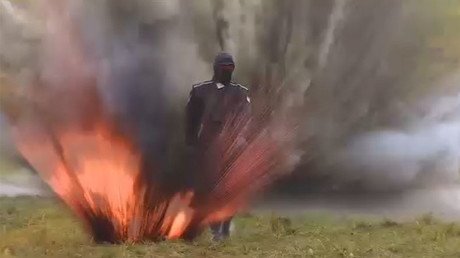Hubble captures awe-inspiring PHOTO of Triangulum galaxy that spans 19,400 light-years

As the holiday season draws to a close, the Hubble telescope has provided one truly massive parting gift: an immensely detailed photo of one of our galactic neighbors that spans 19,400 light-years across.
The massive mosaic image of the Triangulum galaxy (M33) was released on January 7 and shows one of dozens of our celestial neighbours in our suburb of the universe known as ‘the Local Group.’

The composite image includes 54 snapshots of Hubble’s vision digitally stitched together, capturing a truly staggering 25 million stars. The mosaic, shot between between February 2017 and February 2018, spans roughly 19,400 light-years across (full-size image available here).
The extremely bright blue region visible in the top-left hand corner is a solar nursery contained within a nebula of hot, ionised hydrogen gas, where stars are born.
Also on rt.com A star is born: Astronomers witness birth of binary star system for 1st time (IMAGE)Triangulum is perfectly positioned for astronomers to study and compare to both our own Milky Way galaxy and one of our other neighbors, Andromeda, as it faces directly towards us, showcasing its near-perfect distribution of stars along its well-defined spiral structure.
#HubbleCastLight Triangulum Galaxy in unrivalled detailhttps://t.co/DES0G02cbDpic.twitter.com/B6sZNTkPWa
— HUBBLE (@HUBBLE_space) January 8, 2019
“My first impression on seeing the Hubble images was, wow, that really is a lot of star formation,”said astronomer Julianne Dalcanton of the University of Washington in Seattle, who led the project. “The star formation rate intensity is 10 times higher than the area surveyed in the Andromeda galaxy in 2015.”
Also on rt.com It lives! Hubble Space Telescope reawakens after breakdownThe near-perfect distribution of stars within Triangulum has led researchers to believe that the galaxy has somehow avoided any major intergalactic collisions and has remained relatively untouched for aeons.
Like this story? Share it with a friend!















